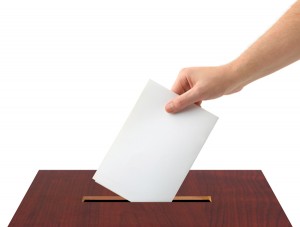 By Steve Brawner
By Steve Brawner
© 2016 by Steve Brawner Communications, Inc.
For the second time in five elections, the winner of the popular vote was not elected president, and that’s OK, we’re told, because look at this map showing the United States is a sea of red counties with a few blue islands. What would happen if those blue people’s votes in California counted as much as everyone else’s?
No chart or graph ever tells the whole story. The problem with these maps is that they perpetuate this binary view of the world that dominates our political discourse these days. They imply that everyone in a blue county is blue, and everyone in a red county is red. The truth is that there are red voters even in the bluest of the blue counties, and vice versa, as well as yellow voters and green voters, too. Every county is purple, just in different shades.
So now we know that a million fewer Americans voted for President-elect Donald Trump than for Hillary Clinton, just as Al Gore won 540,000 more popular votes than President George W. Bush in 2000. After two centuries where it usually worked out that the winner was the one preferred by the most Americans, the opposite has happened twice in the last five elections.
If you’re OK with that, it may be because you’re just glad it’s over and because Trump won fair and square playing by the rules. Football games are won not by the team gaining the most yards but by the team scoring the most points. His victory is entirely legitimate.
But if you’re OK with it simply because your team has benefitted by those rules two out of the last five elections, remember this: What goes around can come around, and it easily could be the other team that benefits next time.
Defenders of the Electoral College say it protects small states, but in reality, it favors larger swing states where the most votes are. The Electoral College’s winner-take-all format in all states except Maine and Nebraska means many states are so safely red or blue that candidates ignore them. A candidate can win by one vote each in 11 big states and not even be on the ballot in the other 39 and still be elected. After the primaries, the two major party candidates never came to Arkansas because they knew Trump would win it. The outcome was a foregone conclusion. Moreover, the Electoral College herds voters into that binary red-blue mindset, marginalizing third party and independent candidates who might have something important to say.
Now there are calls to abolish it, mostly by Democrats, and replace it with a popular vote. If that were the case, in a very close election, the entire country would look like Florida in 2000. We’d all be picking through ballots one by one looking for hanging chads, or filing lawsuits saying electronic ballots were hacked.
Instead, let’s make the Electoral College better – to more accurately reflect the fact that the entire country is composed of different shades of purple instead of only red or blue. Instead of assigning electoral votes on a winner-take-all basis, the number of votes should be increased in each state and then assigned proportionally.
Instead of Arkansas awarding six Electoral College votes, it could award 60 and divide them according to the results. Under that scenario, Trump would have won 37 votes, Clinton would have won 20, the Libertarian Gary Johnson would have won 2, and Evan McMullin would have won 1. Meanwhile, Trump would have won Electoral College votes in California and New York instead of those big states automatically going to Clinton. Maybe the two would have had to visit all of these places instead of camping out in the swing states.
I voted for McMullin, but give credit where credit’s due. Trump did what this column is all about: He saw purple where everyone else saw blue. Pennsylvania and Michigan had voted for the Democrat in six straight elections, while Wisconsin had voted Democrat seven elections in a row. Trump went up there and grabbed those votes – 107,000 more than Clinton between those three states, and that was enough to win him the presidency.
I just think the system would be better if it encouraged candidates to seek votes in reddish-purple Arkansas, too.
Related: A better Electoral College.